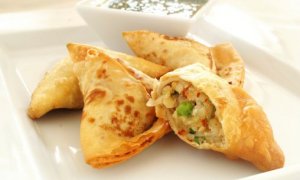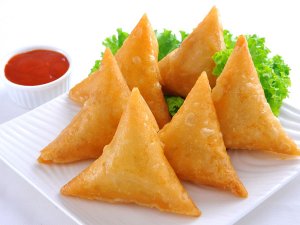The great Mughals invaded India with a roster of culinary innovations of 21st April 1526. The samosa was one of their products that garnered a lot of attention. Ain-i-Akbari, the Mughal document dating from the 16th century confirms that these savoury dishes have been present at that time also.
A 14th-century Moroccan explorer named Ibn Battuta came to India traversing through the brooding mountains of Afghanistan and enjoyed a meal at the court of Muhammad bin Tughluq, the then ruler of Delhi. Battuta’s vivid description of the food, especially the samosas that were served before the third course shows the love that samosas get from everyone. It was described as spicy, small pies stuffed with minced meat, almonds, pistachios and walnuts. The famous Sufi poet Amir Khusro, inventor of tabla, observed that the kings of Delhi Sultanate had a special corner for this delightful dish.
Meanwhile, the Portugals introduced a type of tuber which revolutionized the entire Indian palate. Batata, as it was called by them, used to be the prime ingredient of the Inca empire’s food pyramid. The batata, or as it is better known as potato, replaced almost all other vegetables and very quickly became fan favourite. It was so good that it not just complemented meat while making dishes based on meat, but it also rivaled meat when pitted against it. The modern version of samosa, that we have nowadays is no longer meat-filled savoury and has been replaced with potato fillings to make it appeal to a wider range of audience.
The cooking technique of samosa also called singara in the local language, is different in eastern India due to the use of hing in the dough of samosa and in the way potatoes are made. In Bengal, the potato, rather than being mashed, is chopped into small cubes and prepared before it is put inside the dough parcel. As we move to the northern part of India, potato is mashed and cooked with spices and then it is put inside the dough. The process is similar in the south too, the only difference is that the samosas are made with local spices and the filling has onion, carrots, cabbage and curry leaves.
However, this royal dish is very dangerous for health if consumed at a large amount. Overconsumption of samosas can result in acidity, obesity, gastronomic disorder, and diarrhoea. However, it is a good snack to be enjoyed at moderation.




